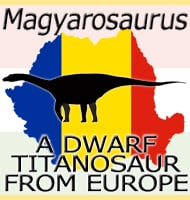Magyarosaurus
In Depth Magyarosaurus is considered the smallest titanosaur, and is regarded as a fine example of insular dwarfism. This is where animals that live in an area of limited size, such as an island, grow smaller so as not to use up the available food supply. Although some have made the suggestion that Magyarosaurus specimens … Read more
